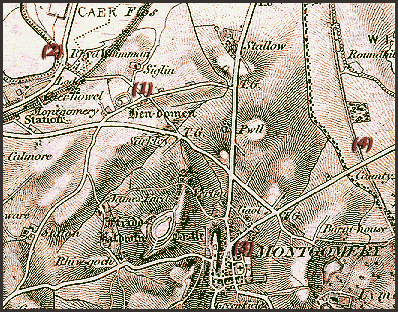
Hendomen: the Motte and Bailey Castle
at Montgomery
by
Nixon Oliver
Detail of a 19th century 1" OS map
(1) Hendomen
(2) Rhydwyman
(3) Town of Montgomery
(4) Line of Offa's Dyke
Powys County Archives
